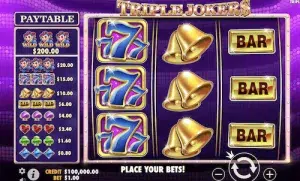Understanding the Basics of Pai Gow
When delving into the game of Pai Gow, the first hurdle often overlooked by many is the significance of setting both the high and the low hand optimally. Pai Gow is a unique poker variant where players are dealt seven cards, which they need to split into a five-card ‘high’ hand and a two-card ‘low’ hand. The trick? The five-card hand must outrank the two-card hand. This setup is paramount because an incorrect arrangement of hands can lead straight to a losing game, even before other strategies come into play.
Mastering Hand Settings
For instance, consider a scenario where you’re dealt two pairs, one high and one low, along with three other unpaired cards. New players might mistakenly place the higher pair in the five-card hand and the lower pair in the two-card hand. However, savvy players know that keeping both pairs in the high hand and selecting the highest remaining card for the low hand often results in a stronger overall position, enhancing the chance to win against both the high and low hands of the opponent.
Advanced Strategies in Pai Gow
Once you are comfortable with basic hand settings, integrating more nuanced strategies can significantly enhance your gameplay. The use of a ‘House Way’ button, if available, can serve as a learning tool. This feature automatically splits your hand according to the casino’s preset strategy, which usually reflects a solid foundational strategy, though not always the most aggressive or creative.
Playing the Odds
Understanding the probabilities in Pai Gow can also lead to more informed decisions. For example, the chance of getting no pair in your hand is considerably lower than getting at least one pair. Utilizing this knowledge, a strategic player can assume they will often need to determine the best way to play singles and pairs rather than hoping for straight or flush opportunities, which are statistically less likely.
Bankroll Management in Pai Gow
Pai Gow is known for its slow pace and frequent pushes (where neither player nor dealer wins), which can be an advantage for those looking to spend more time at the table with less risk to their bankroll. However, even with lower-risk games, effective bankroll management is crucial.
Setting Win/Loss Limits
Always enter a Pai Gow session with clear win and loss limits. This strategic move helps prevent the common pitfall of chasing losses or gameplay extension after a win streak. For example, if you start with $200, you might set a win limit of $100 and a loss limit of $100. Once you reach either threshold, you call it quits for the session.
Increasing Winning Chances
One aspect of Pai Gow that can turn the tide in your favor is the banking option. When you bank in Pai Gow, you essentially become the dealer, which gives you a slight edge, as you win the copies (when your hand matches the dealer’s hand). Banking also allows you to see how other players set their hands, which can provide insights into more effective hand-setting strategies.
Utilization of Side Bets
Another way to boost potential earnings is to consider the side bets, such as the ‘Fortune’ pai gow bet, where players wager on hitting a premium hand. These bets offer high payouts but also come with high house edges. They should be made sparingly, and preferably when you’re playing with a surplus from your standard game winnings.
Practical Takeaways
Playing Pai Gow like a pro involves a blend of understanding the basics, applying advanced strategies, practicing sound bankroll management, and seizing opportunities to increase winnings through methods like banking and judiciously making side bets. A well-rounded approach not only enhances the enjoyment of the game but also improves your overall effectiveness as a player in any casino setting.
Remember, every session at the Pai Gow table is a chance to refine your strategy and decision-making skills. Don’t shy away from the challenge; embrace it with the strategies and insights outlined, and you’re sure to see improvement in both your confidence and your results.

David Garato is a luminary in gaming journalism, renowned for peeling back the curtain on the gaming world with his witty and insightful commentary. A decade into weaving stories from the pixelated edges of indie games to the expansive universes of AAA titles, David’s work is a thrilling blend of analysis and adventure. When not writing, he’s live-streaming, sharing his gaming exploits with an engaged and growing audience. David doesn’t just write about games; he lives them, making him a trusted guide in the gaming community.
















